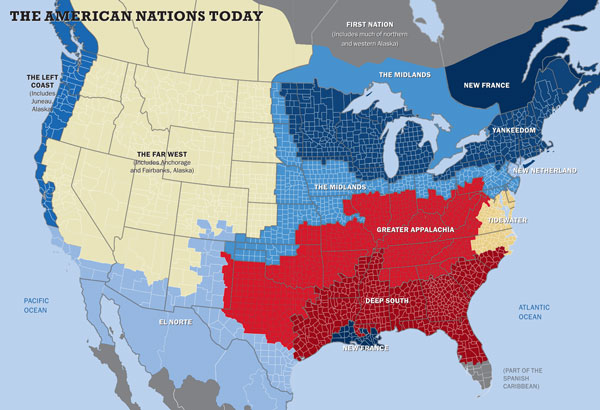
Colin Woodard writes:
Beyond a vague awareness that supporters of violent retaliation and easy access to guns are concentrated in the states of the former Confederacy and, to a lesser extent, the western interior, most people cannot tell you much about regional differences on such matters. Our conventional way of defining regions—dividing the country along state boundaries into a Northeast, Midwest, Southeast, Southwest, and Northwest—masks the cultural lines along which attitudes toward violence fall. These lines don’t respect state boundaries. To understand violence or practically any other divisive issue, you need to understand historical settlement patterns and the lasting cultural fissures they established.
The original North American colonies were settled by people from distinct regions of the British Isles—and from France, the Netherlands, and Spain—each with its own religious, political, and ethnographic traits. For generations, these Euro-American cultures developed in isolation from one another, consolidating their cherished religious and political principles and fundamental values, and expanding across the eastern half of the continent in nearly exclusive settlement bands. Throughout the colonial period and the Early Republic, they saw themselves as competitors—for land, capital, and other settlers—and even as enemies, taking opposing sides in the American Revolution, the War of 1812, and the Civil War.
There’s never been an America, but rather several Americas—each a distinct nation. There are eleven nations today. Each looks at violence, as well as everything else, in its own way.
Full Story: Tufts Magazine: Up in Arms
(Thanks moonandserpent)